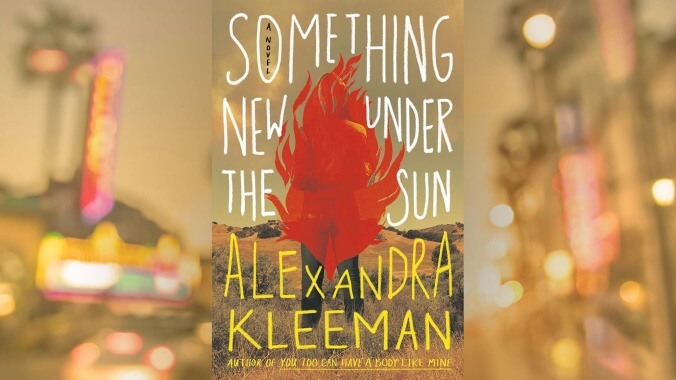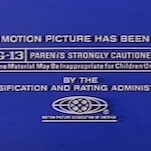Cover image: Hogarth Graphic: Natalie Peeples
An East Coast novelist’s Hollywood dream goes up in flames in Alexandra Kleeman’s Something New Under The Sun. Patrick Hamlin heads west expecting to find fame and glamour. Instead, he arrives in a burning, drought-ravaged state where water has been replaced with WAT-R, a privately controlled lab-made alternative. And the set where the adaptation of his book is being filmed is run by sketchy, secretive producers. Still, Patrick is determined to make it all worth leaving his wife and daughter behind for.
Patrick’s expectation that he is starting on a grand adventure is upended on a number of fronts. He is ignorant of WAT-R and thinks he’ll be an integral part of the production of the movie, but is instead assigned to serve as a handler and errand boy for its young star, Cassidy Carter, who came up through a Disney-esque pipeline but has fallen out of favor with the public after someone filmed her stealing tampons.
Their pairing is the novel’s engine, as they begin to suspect something is not right with the film and its producers, Jay Arvid and Brenda Billington. Kleeman creates a page-turning momentum as Patrick and Cassidy attempt to connect the Chinatown-esque dots between Jay, Brenda, the WAT-R corporation, and an increasingly prevalent illness known as Random-Onset Acute Dementia (ROAD), which affects people regardless of age or health.
All the while, California keeps burning. The characters rarely talk about this, even when they come face to face with it. One day while driving in a production-provided van, Cassidy and Patrick see “a moving, living fire: stamped on the flank of the mountain like a brand, a neon sign, spelling out a single illegible word.” They turn up the air conditioning and keep going.
Patrick’s confrontation with environmental disaster is the novel’s thematic core and the central point of conflict with his wife, Alison, who experiences a nearly debilitating fear of climate catastrophe and receives little support from him. On the day he arrives in Los Angeles, she tells him that she and their daughter, Nora, are moving to a sustainable commune called Earthbridge. “I look out the back window of our house and I don’t see the park or the trees. I see all of it dying,” she says. “I look at Nora and I know there’s no future for her.” Like Sarah Connor in Terminator 2, Alison is cast as a madwoman for accurately assessing the gravity of the situation.
As the neo-noirish plot charges on, one question recurs: How do you go about your life when the world is on fire? Alison’s therapist tells her that she must “forgive herself for living”—an insufficient answer in the face of an apocalyptic crisis. This is in keeping with the rest of Kleeman’s oeuvre. In her 2015 novel, You Too Can Have a Body Like Mine, and her 2016 short story collection, Intimations, her worlds can seem like nightmares. The details are vivid, and the attention paid to the mundane simultaneously clarifies and alienates, while her characters often lack the agency to stop what is happening to them.
The difference in Something New Under The Sun is that both its world and characters are more fully fleshed out. Patrick and Cassidy are especially alive, with an energetic dynamic that grows in surprising ways. Kleeman also makes space for other assistants and Patrick’s family, but giving everyone their due creates some formal problems. In her first novel and stories like “Fairy Tale,” the flatness of the characters facilitated unnatural, matter-of-fact dialogue, and she occasionally slips back into this mode here, though the style isn’t effective here.
Occasionally, the book also feels overstuffed. Kleeman sometimes expands the scope of her story outside of her central characters, to those caught waiting for unreliable WAT-R deliveries, for example, though such moments appear only in stray paragraphs. They are enticing glimpses into the way the system that Patrick and Cassidy are investigating harms and exploits regular people, but as the book closes without much development on these fronts, they come across as afterthoughts.
Something New Under The Sun melds its portrait of a burning world to an engaging, well-executed conspiracy thriller—merging so-called climate fiction with another genre. As our reality grows to resemble imagined apocalyptic futures, it’s the type of novel you can expect to see more of.
Author photo: Nina Subin








































